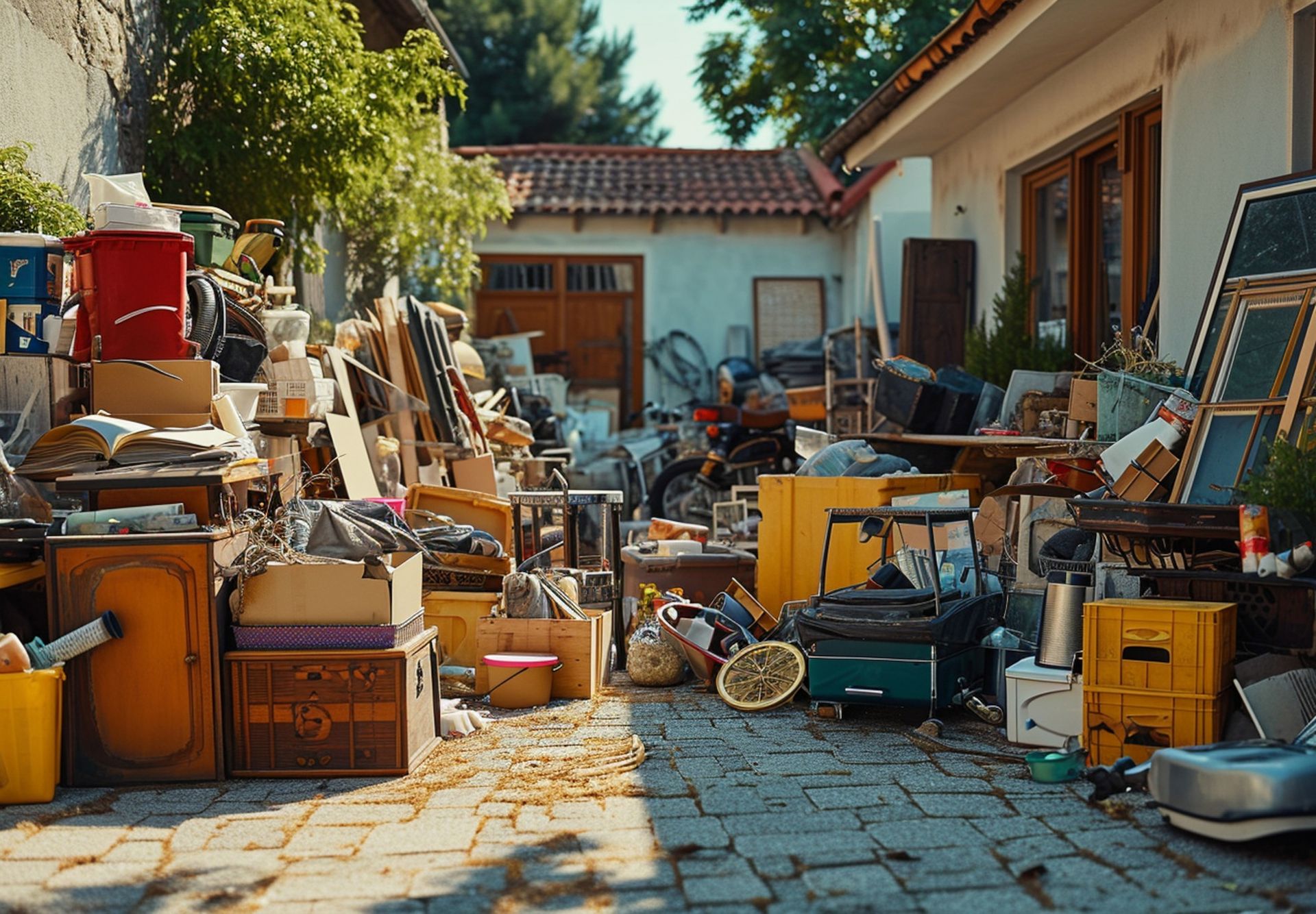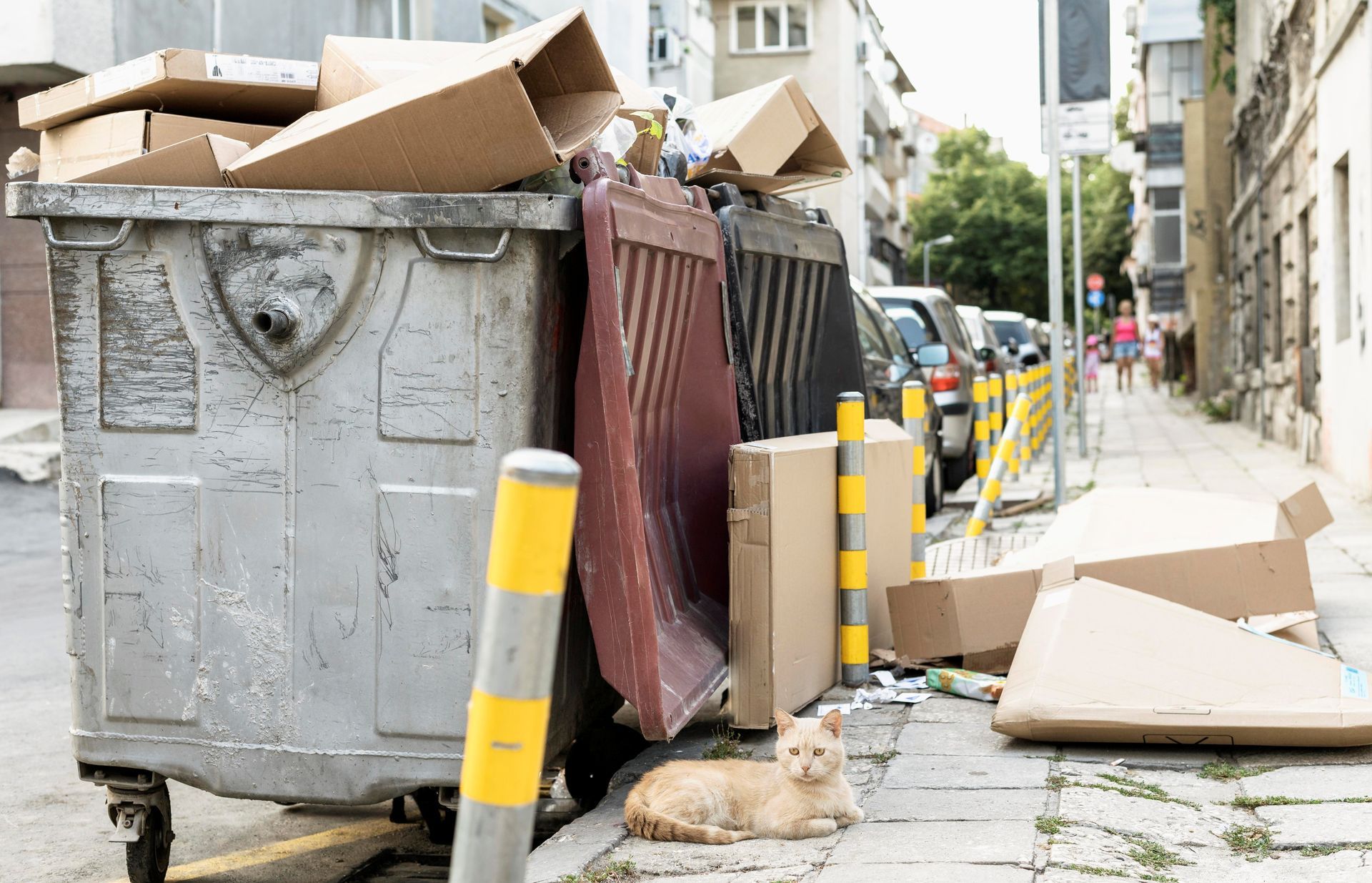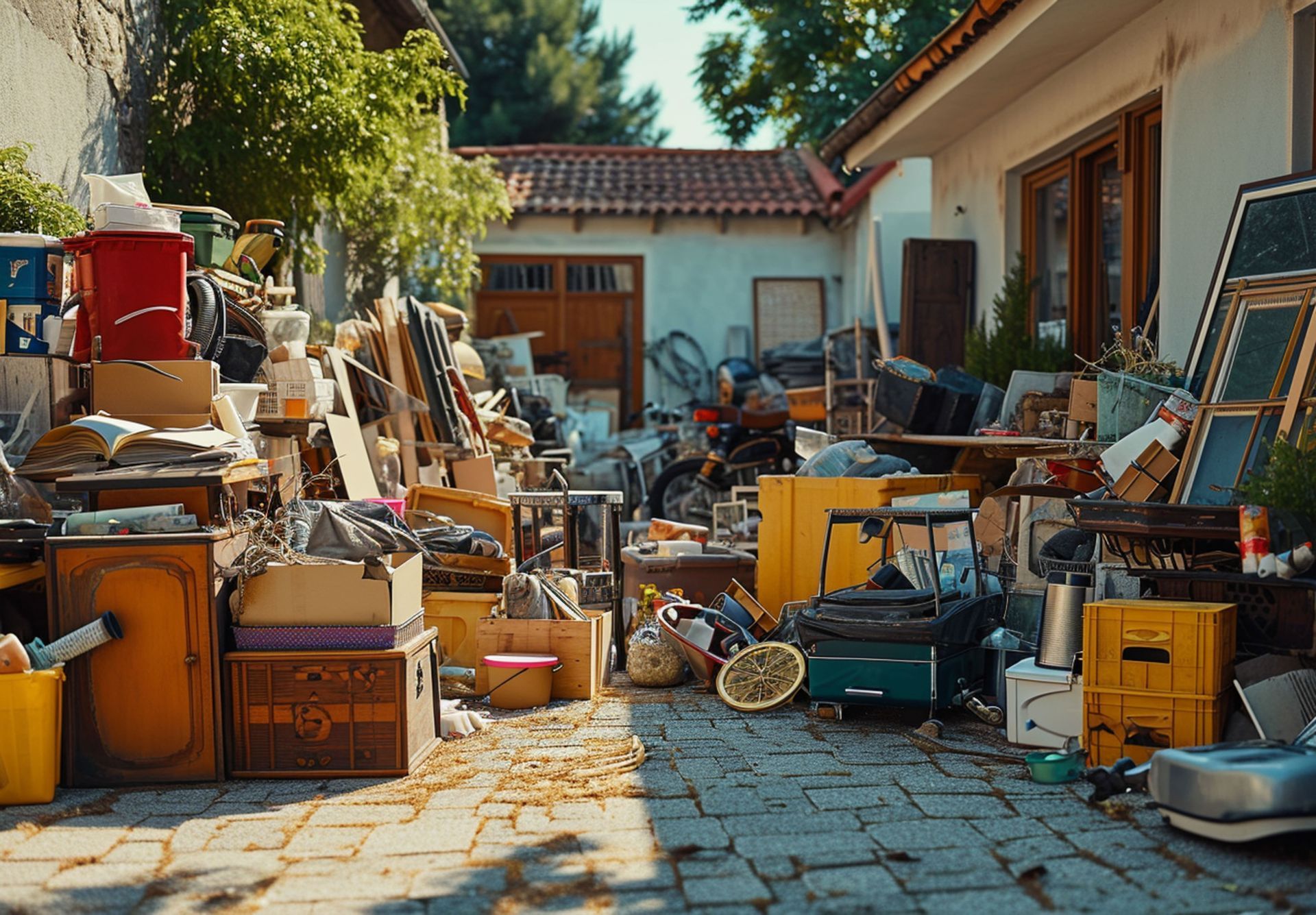Did You Know You Can Sell Your Old Computer Monitor for This Much?
Did You Know You Can Sell Your Old Computer Monitor for This Much?
In today's tech-driven world, managing old technology is more important than ever. The rise of electronic waste, or e-waste, poses significant environmental challenges, making it crucial to consider how you handle outdated devices like computer monitors. Whether you're looking to sell, repurpose, or recycle computer monitors, each option plays a vital role in reducing e-waste.
Why should you care about e-waste? It's simple—improper disposal of electronics contributes to pollution and resource depletion. Computer monitors, particularly older models, contain materials that can be harmful if not disposed of responsibly.
When faced with an old computer monitor, you have three primary options:
- Sell Old Computer Monitor: This option can provide financial returns if the monitor is in working condition. Platforms like Facebook Marketplace or Craigslist can connect you with potential buyers.
- Repurpose Computer Monitors: Get creative by transforming your monitor into something useful—a secondary display for multitasking or even a digital photo frame.
- Recycle Computer Monitors: If the device is beyond repair, recycling ensures that hazardous components are handled safely and materials are reclaimed for future use.
Each choice has its own benefits and responsibilities. By thoughtfully considering how to deal with your old computer monitor, you contribute to minimizing e-waste and promoting sustainable practices.
Understanding the Value of Old Computer Monitors
When considering how much you might earn from selling an old computer monitor, several factors come into play. The brand, model, and condition of the monitor are crucial determinants of its value on the second-hand market. High-end brands such as Dell or Aopen tend to fetch more than lesser-known brands. Similarly, modern models with advanced features can command higher prices compared to older counterparts like a 1990 computer monitor.
How Monitor Types Affect Prices
The type of monitor also significantly influences its price:
- CRT Monitors: Once prevalent, CRT monitors have mostly been supplanted by LCDs. However, some enthusiasts still seek them for retro gaming setups. While CRTs generally attract lower prices due to their bulkiness and outdated technology, certain models like the best CRT computer monitors can still be valuable.
- LCD Monitors: More desirable in today's market because of their efficiency and compact design, recent trends suggest that used LCD screens could sell for anywhere between $20 to $150 depending on their specifications and condition.
Tools to Estimate Monitor Value
If you're wondering "how much for a monitor?" or "where to sell broken monitors?", several tools can help you estimate the value accurately:
- Online Marketplaces: Platforms such as eBay or Amazon offer insights into prevailing prices for specific models.
- Pricing Estimators: Websites dedicated to electronics resale often provide estimators that calculate potential selling prices based on market data.
- Local Classifieds: Checking platforms like Facebook Marketplace or Craigslist can give you a sense of local demand and pricing.
Ultimately, understanding these aspects allows you to better assess whether selling your old computer screen is worthwhile or if alternative options like repurposing or recycling should be considered.
1. Selling Your Old Computer Monitor
Popular Platforms for Selling
The digital age offers multiple avenues to sell your computer screen online, catering to various needs and preferences. Facebook Marketplace and Craigslist are two popular platforms that provide an easy and user-friendly interface to list your monitor.
- Facebook Marketplace
- Pros:
- Large audience reach, especially local buyers.
- Easy integration with your existing Facebook account.
- Direct communication with potential buyers via Messenger.
- Cons:
- Requires dealing with inquiries, which can be time-consuming.
- Potential for no-shows or last-minute cancellations.
- Craigslist
- Pros:
- Simple listing process without the need for account creation.
- Anonymous postings if desired.
- Cons:
- Spammy responses can be a nuisance.
- Safety concerns when meeting buyers in person, necessitating caution.
Exploring these platforms can help you find interested buyers quickly, but it's crucial to weigh the pros and cons based on your personal comfort and convenience.
Tips for Selling Effectively
Creating an appealing listing can significantly enhance the chances of selling your monitor swiftly. Here are some effective tips:
- Photography: Take clear, high-resolution photos from multiple angles. Ensure good lighting to highlight the monitor's condition and any accessories included.
- Descriptions: Craft a detailed description mentioning key specifications like brand, model, screen size, resolution, and any notable features or defects. Honesty about the monitor's condition builds trust with potential buyers.
- Pricing: Research current market trends to set a competitive yet fair price. A slightly lower price might attract more interest if you're keen on a quick sale.
A well-presented listing stands out among others and captures buyer attention effectively.
Local Secondhand Stores and Donation Options
For those who prefer a more straightforward approach without managing online listings, exploring local options is worthwhile:
- Secondhand Stores for Monitors: Many local electronics or thrift stores purchase used monitors. This option provides immediate transactions without waiting for online interest. Visiting stores in person allows direct negotiations, often leading to quick sales.
- Donation: Donating to organizations or community centers is another viable choice. It not only supports those in need but also serves as a hassle-free way of responsibly offloading old equipment.
These alternatives offer simplicity compared to online platforms, allowing you a smoother process if convenience is your priority. The choice between selling online or locally depends on your immediate goals—whether maximizing profit or minimizing effort takes precedence.
2. Repurposing Ideas for Old Monitors
Repurposing old computer monitors can be both a creative and eco-friendly solution. Instead of discarding them, consider transforming these devices into something new and functional.
Creative Ways to Repurpose Old Monitors
Here are some innovative ideas for repurposing your old monitors:
- Smart Mirrors: By incorporating a Raspberry Pi, your old monitor can become a stylish smart mirror. This setup displays useful information like weather or calendar events on the mirror's surface while retaining its reflective properties.
- TV Conversions: With some technical know-how, turn monitors into secondary televisions. This project is particularly useful in bedrooms or kitchens where full-size TVs might be too large.
- Raspberry Pi Projects: Use an old monitor as part of a Raspberry Pi project. It can serve as a dedicated screen for DIY computers or gaming stations.
Step-by-Step Guide for Popular Repurposing Projects
Here are two popular repurposing projects along with their step-by-step guides:
Building a Dual-Screen Setup
- Equipment Needed: An extra monitor, appropriate cables (VGA, HDMI), and a compatible computer.
- Steps:
- Place the monitor beside your primary display.
- Connect it to your computer using the necessary cable.
- Adjust display settings in your operating system to extend or duplicate the screen.
Creating a Digital Photo Frame
- Equipment Needed: A digital photo frame kit or software, an old monitor, and possibly a Raspberry Pi.
- Steps:
- Connect the monitor to the Raspberry Pi or similar device running photo frame software.
- Load your digital photos onto the device.
- Set up slideshow settings to cycle through images.
Benefits of Repurposing Technology
Repurposing offers several advantages beyond reducing landfill waste:
- Cost Savings: Extending the life of old equipment saves money that might otherwise be spent on new gadgets.
- Customization: Tailor projects to fit personal needs and preferences, enhancing their utility and enjoyment.
- Environmental Impact: By repurposing instead of discarding, you contribute to reducing the environmental footprint associated with manufacturing new electronics.
Reimagining the potential of an outdated monitor not only breathes new life into it but also aligns with sustainable practices that benefit both individuals and communities alike.
3. Recycling Old Computer Monitors Responsibly
Recycling old computer monitors is more than just a good deed; it's a crucial step in combating environmental damage. Discarded monitors often end up in landfills, where they can release harmful substances into the soil and water systems. By recycling electronic waste responsibly, you contribute to reducing these environmental hazards.
Hazardous Materials in Monitors
Old computer monitors, particularly CRT and LCD types, contain materials that require careful handling:
- CRT Monitors: These contain leaded glass, phosphors, and other toxic metals such as cadmium and barium. Lead, in particular, poses significant risks of soil and groundwater contamination if not disposed of properly.
- LCD Monitors: While generally less hazardous than CRTs, LCDs still contain mercury in their backlighting systems and other potentially harmful components like arsenic.
The presence of these toxic metals in monitors demands that they be processed safely to prevent any adverse environmental impact.
Finding Reputable E-Waste Recyclers
When it comes to disposing of your old monitor safely, finding reputable e-waste recyclers is essential. Here’s how to locate those who adhere to responsible e-waste programs:
- Research Local Options: Check with local government websites or community centers for lists of certified e-waste recycling facilities near you. Many municipalities offer drop-off events or designated collection points for electronic waste.
- Verify Certifications: Look for recyclers with certifications such as R2 (Responsible Recycling) or e-Stewards. These certifications ensure that the recycler follows strict standards for environmentally safe disposal practices.
- Consumer Reviews and Feedback: Websites like Yelp or Google Reviews can provide insights into others’ experiences with specific recyclers. Positive reviews often indicate trustworthy services that handle electronics responsibly.
- Manufacturer Take-Back Programs: Some manufacturers offer take-back programs where they accept their products for recycling at no charge or minimal cost. This can be an efficient option if your monitor's brand supports such initiatives.
By choosing a reputable recycler, you ensure that your old monitor is dismantled and processed correctly, preventing toxic materials from harming the environment.
Recycling isn't just about discarding waste; it's about making informed decisions that protect our planet's health while fostering sustainable practices. Whether it's through researching local options or verifying credentials, every step taken towards responsible disposal counts towards creating a cleaner future.
For a comprehensive understanding of how to recycle electronics responsibly, you can follow this 4-step guide.
The Risks of Improper Disposal: Why You Should Think Twice Before Tossing That Old Monitor in the Trash!
Throwing away old computer monitors without care can harm the environment. These devices contain harmful substances like lead and mercury that can seep into the ground and water over time. This pollution damages the soil and water, affecting ecosystems and potentially entering the human food chain. It's essential to understand how e-waste disposal impacts the environment to promote safe handling practices.
The Importance of Proper Toxic Metal Disposal
When monitors are thrown away carelessly, their dangerous parts pose a threat to public health and safety. It's crucial for communities to manage e-waste responsibly to reduce these risks.
Legal Implications of Improper E-Waste Disposal
Another factor to consider is the legal consequences. Many areas have strict laws about how electronic waste should be disposed of. Ignoring these laws can lead to fines or penalties, highlighting the importance of knowing and following local regulations.
Community Responsibilities in E-Waste Management
Local governments often offer resources or services for proper e-waste disposal, encouraging residents to get involved. It's essential for communities to take an active role in managing electronic waste.
Ensuring you dispose of your old monitor properly is not just about avoiding legal consequences—it's also about positively contributing to environmental sustainability and community well-being.
Making an Informed Decision: Sell, Repurpose, or Recycle?
Deciding what to do with an old computer monitor involves weighing several factors. Evaluating the condition of your monitor is a good starting point. If it is still functional and in decent shape, selling might be the best option. Platforms like Facebook Marketplace and Craigslist can provide a financial return while finding a new home for your device.
For those inclined towards creativity, repurposing offers exciting possibilities. Transforming a monitor into a secondary display or digital photo frame not only saves money but also contributes to reducing electronic waste. This choice reflects a commitment to innovation and sustainability.
Recycling stands as a responsible alternative, especially if the monitor is no longer operational. Recycling ensures safe disposal of hazardous materials and supports environmental protection efforts. Locating reputable e-waste recyclers in your area is crucial for this path.
Considering personal preferences and values is essential in making this decision:
- Financial gain: Sell if your monitor is in good condition.
- Creative reuse: Repurpose if you're looking for innovative projects.
- Environmental responsibility: Recycle if it's no longer functional.
Reflect on these perspectives to determine whether you should sell, repurpose, or recycle your old computer monitor. Each choice has its own merits and aligns with different priorities.
Frequently Asked Questions
What are my options for disposing of an old computer monitor?
You can choose to sell, repurpose, or recycle your old computer monitor. Each option has its benefits: selling can provide you with some cash, repurposing allows you to creatively reuse the monitor, and recycling helps minimize e-waste and protect the environment.
How do I determine the value of my old computer monitor?
The value of an old computer monitor is influenced by factors such as brand, model, and condition. You can use online pricing estimators and check recent market trends to get an idea of average prices for different types of monitors (CRT vs. LCD).
Where can I sell my old computer monitor?
Popular platforms for selling old monitors include Facebook Marketplace and Craigslist. Local secondhand stores or donation centers are also good options for those who prefer a hassle-free approach.
What are some creative ways to repurpose an old monitor?
You can repurpose an old monitor into a smart mirror, digital photo frame, or even a dual-screen setup for your computer. There are many DIY projects that can help you creatively reuse your technology while reducing waste.
Why is it important to recycle old computer monitors responsibly?
Recycling electronic waste responsibly prevents environmental harm caused by hazardous materials found in CRT and LCD monitors. Proper recycling ensures these toxic substances are handled safely, protecting soil and water from contamination.
What should I consider when deciding whether to sell, repurpose, or recycle my monitor?
Consider the condition of your monitor, your personal preferences, and your values regarding environmental sustainability. Each option has its advantages depending on how you wish to handle your old technology.


